Human Beings Begin as Zygotes: Refutations to 8 Common Pro-Choice Arguments
Disclaimer: This blog post is meant for biological definition purposes. It is not meant to establish or argue any moral or philosophical points.
[Esta publicación está disponible en español aquí.]
A zygote is a human being.
1. The zygote is an organism.
Fertilization – the fusion of gametes to produce a new organism – is the culmination of a multitude of intricately regulated cellular processes.
Marcello et al., Fertilization, ADV. EXP. BIOL. 757:321 (2013)
This is not a new concept. The zygote has been recognized as an organism for decades:
The zygote and early embryo are living human organisms.
Keith L. Moore & T.V.N. Persaud, Before We Are Born – Essentials of Embryology and Birth Defects. (W.B. Saunders Company, 1998. Fifth edition.) pg 500
Embryo: the developing organism from the time of fertilization until significant differentiation has occurred, when the organism becomes known as a fetus.
Cloning Human Beings. Report and Recommendations of the National Bioethics Advisory Commission. Rockville, MD: GPO, 1997, Appendix-2.
Although life is a continuous process, fertilization is a critical landmark because, under ordinary circumstances, a new, genetically distinct human organism is thereby formed.
O’Rahilly, Ronan and Muller, Fabiola. Human Embryology & Teratology. 2nd edition. New York: Wiley-Liss, 1996, pp. 8, 29.
The development of a human begins with fertilization, a process by which the spermatozoon from the male and the oocyte from the female unite to give rise to a new organism, the zygote.
Sadler, T.W. Langman’s Medical Embryology. 7th edition. Baltimore: Williams & Wilkins 1995, p. 3
Some pro-choicers imply that the zygote is in some nebulous “in between phase” – not a gamete but not a human organism. But biologically, life cycles do not contain such a phase. In humans (animals), our life cycle goes from diploid organism, which produces haploid gametes, which combine to form a new diploid organism. The zygote isn’t in an unknown stage; it’s the same organism as the grown adult, but at an earlier stage of life.
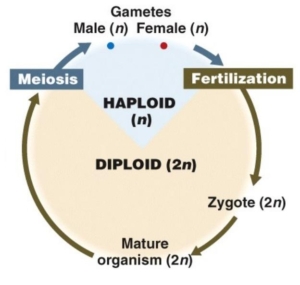
2. Every organism is part of some species, and the human ZEF is part of the human species (Homo sapiens) by virtue of its human DNA.
A species is defined as
(2) An individual belonging to a group of organisms (or the entire group itself) having common characteristics and (usually) are capable of mating with one another to produce fertile offspring.
Biology Online, Dictionary – Species
Please note that “capable of mating” does not mean at any given instant. For example, newborns are not capable of mating, but are still organisms of the human species. “Capable of mating” refers to an organism who should be capable of mating in their lifetime, barring sterility. And on that note, also keep in mind that there’s a difference between an individual organism being sterile vs. an organism having developed genetic changes which render reproduction with his origin species impossible (speciation).
Every organism is part of some species. There are no “non-species” organisms. The organism is part of its parents’ species. For example, two honey-badgers cannot reproduce and create a frog; their offspring would also be a honey-badger. Furthermore, an organism can never change its species mid-development (in the middle of its life). A honey-badger zygote develops into a honey-badger adult; a honey-badger zygote can’t develop into a frog adult.
One species can develop into another species over many generations. This is called speciation. Speciation most often occurs when one species is split into two or more geographical groups (allopatric speciation). Genetic changes accumulate over many generations, not within a single lifespan, such that if the groups ever met again, they would not be able to produce viable offspring. That’s when you can say “these are now two different species.”

But we would never say “this offspring is an organism but has no species membership.”
Human zygotes are human, both because their parents are human and because they have human DNA. They are not part of some other species, nor do they lack species membership.
3. An organism that is a member of the species Homo sapiens is a human being.
There are other definitions of human being, including “a person, especially as distinguished from other animals or as representing the human species.” I am only referring to the biological definition of human being when I use the term:
1. any individual of the genus Homo, especially a member of the species Homo sapiens.
Dictionary.com, “human being”
CONCLUSION: Since the zygote is an organism and a member of the species Homo sapiens, it is a human organism and therefore, biologically, it is a human being.
Responses to 8 common questions/objections.

Below we present some topics that have been brought up as questions or objections.
Q1. Chimerism
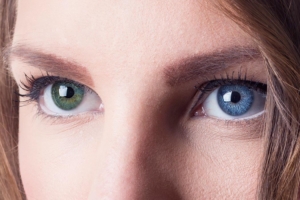
Put simply, a chimera is a single organism composed of more than one unique DNA type (or antigenic marker on red blood cells). In animals, this can result from the merging of 2+ zygotes into one entity (tetragametic), or from twins sharing blood supply in gestation (“blood chimeras” have more than one blood type). You can be a microchimera if you received blood from mom early in gestation, if as a mother you received fetal cells during pregnancy (as most do), or just from a blood transfusion. You’re even considered a chimera if you received an organ transplant. Chimerism is usually asymptomatic, but rarely it can result in things like intersexuality if it results from absorption of a twin.
The important thing to note is that a chimera is still one individual human organism:
Chimera, in genetics, an organism or tissue that contains at least two different sets of DNA. In dispermic chimeras, two eggs that have been fertilized by two sperm fuse together, producing a so-called tetragametic individual—an individual originating from four gametes, or sex cells. When two zygotes do not undergo fusion but exchange cells and genetic material during development, two individuals, or twin chimeras, one or both of whom contain two genetically distinct cell populations, are produced.
Britannica, “Chimera“
You may be a chimera and not even realize it. You may have multiple DNA types due to absorption of some cell types or an entire other organism — and this doesn’t change the fact that you are still an individual human organism.
The reason this is brought up as an objection is because people sometimes think of DNA as some sort of marker of individuality, and therefore they may see multiple markers of DNA as a sign of “multiple individuals.” DNA can function as an individuality marker, but it doesn’t always as is evident in the case of identical twins. DNA is simply a code of instructions for the body to function effectively as an organism. That’s it. If it is unique to you, and you only have one set of DNA — great! If you do not have unique DNA, or you have multiple unique DNA sets — you’re still a singular human organism.
Q2. Twinning

This objection usually goes something like: A zygote can twin, therefore how can you say it’s an individual human being before the potential twinning stage is over?
This objection is interesting because by extension, none of us are individual human beings. Why? Well twinning is essentially the same thing as cloning. The main difference is that one happens “naturally” and the other happens artificially. The point is, if your DNA can be taken from an epithelial cell on your arm and made into a clone, would spawning a clone mean you were not an individual human being to begin with? With advanced technology, we could all conceivably be in the “twinning” (cloning) phase indefinitely! Yet we’re all still singular human organisms. This is basically the backwards version of chimerism, by the way. Absorbing or spawning organisms does not change the fact that a single organism is still a single organism.
Read more: Monozygotic twinning, Weasley brothers, flatworms, and cow clones.
Q3. In Vitro Fertilization (IVF)

“In vitro” means “outside the body.” IVF is when we use sperm to fertilize an egg in a laboratory dish instead of a uterine tube (in vivo). The resulting embryo is then placed into the woman’s uterus to allow implantation and thus a pregnancy, which is why IVF is considered a type of assisted reproductive technology (ART).
The pro-life objection to IVF is that — due to time, cost, and failure rates — companies performing the procedure will always fertilize more than one embryo at a time. Many will then select the highest quality embryos to increase chances of a successful pregnancy. This means either cryopreservation (freezing) of the remaining embryos if the couple wants to pay for it, or destroying them.
In some countries, including the US, multiple embryos can be transferred to the woman’s uterus to increase chances of a successful pregnancy. This can sometimes result in multiple implantations (twins or more), but this isn’t usually the case, which means the other embryo will have been miscarried.
It’s worth noting that although survival rates for IVF are poor, nothing about IVF alters the basic biological process outlined above: gametes join to form a new human organism. It is merely accomplished in a laboratory rather than in the womb. People conceived through IVF are as human as anyone else.
From my perspective, there is nothing inherently wrong with IVF if it were done on one embryo at a time, which gives every embryo the best possible chance of life. But this is not standard practice. Rather, IVF is used to make multiple embryos with the foreknowledge that not all will be allowed to grow and live their life, and in most cases with the foreknowledge that some will die.
One objection to this is: But a large percentage of conceptions die before ever implanting, or soon after. Why is that foreknowledge ok in natural conception, but suddenly wrong if done in a petri dish? In natural conception, couples are trying their best to give every zygote a chance to live. If a zygote dies naturally, that is not the preemptive work of the couple creating him/her as it is in most cases of IVF. And while I greatly sympathize with men and women who have fertility problems but have a great desire to create their own offspring, the solution is not to treat human organisms as disposable.
Q4. Random Mutations
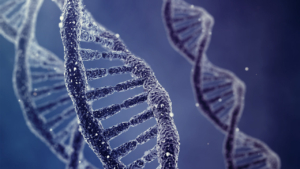
Through your life, your body replenishes cells via mitosis. Every time a cell is copied, the replication machinery — while mostly very accurate — will make mistakes in copying the template DNA. Not to worry, there is proofreading machinery too. However, even this can make mistakes. So in the end, there is some non-zero number of mutations that are incorporated into the new cell which are propagated in that cell line (although you still have your original batch of stem cells).
What this means is that as you get older, some portion of your cells will have a specific DNA sequence that is different than the one you had when you were younger. Some people see DNA as a unique identifier, like a name, and therefore a change in this identifier might mean you are not the same individual.
We all change as we grow. I am not the same person I was when I was 5; I have different memories, experiences, mindsets, functionality, and slightly different DNA. But guess what? I’m still the same organism. While some people may ascribe to the belief that we are not the same “person” we were yesterday, in a scientific sense we are still the same organism. An organism goes through changes in its life, but it doesn’t end its life and begin a new one in the same body.
Q5. Life as a continuum versus individual life.
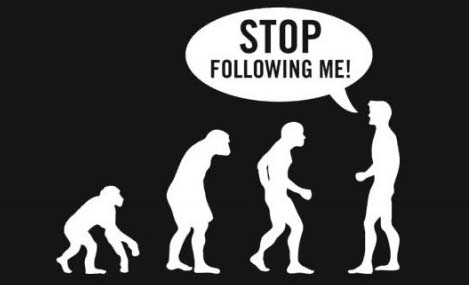
We have written about this topic before. The objection goes something like: “Human life doesn’t begin at fertilization; it began millions of years ago.”
The objection confuses the life of an individual human organism with life arising from life (also known as the Law of Biogenesis.) The Law of Biogenesis points out that living matter has to come from other living matter. However you, as an organism, were not the precursor molecules that eventually formed you, as an organism. For example you were not sperm and egg. Or an early primate. The precursors that create an organism are not equivalent to the organism itself.
The fact that all life comes from preexisting life does not change the fact that an individual organism’s life has a start and end point. And for human organisms, that starting point is always as a zygote.
Q6. Hydatidiform Mole

A hydatidiform mole (1/1000 pregnancies in the US) is an abnormal fertilized egg which implants in the uterus.
(Q6a) Complete Mole
This abnormality can occur when one (90%) or even two (10%) sperm combine with an ovum that has no maternal DNA; the sperm then replicates its DNA to create an artificially “diploid” cell. This results in a mass of abnormal tissue which can develop into cancer (15-20%) and/or invade the uterine wall (10-15% of all molar pregnancies will invade if not removed). Complete moles have no embryonic growth; there is only abnormal placental tissue. Maureen Condic said it much better than I ever could (the bolded part is most important):
Despite an initial (superficial) similarity to embryos, hydatidiform moles do not start out as embryos and later transform into tumors, they are intrinsically tumors from their initiation. Moreover, they are not frustrated embryos that are “trying” (yet unable) to develop normally. Just as a CD recording of “Twinkle, twinkle little star” is not somehow thwarted in its attempt to play the “Alphabet song” by a deficiency of notes in the fourth measure …, hydatidiform moles are not “blocked” from proceeding along an embryonic path of development by a lack of maternally-imprinted DNA. Rather, hydatidiform moles are manifesting their own inherent properties—the properties of a tumor. Even in the optimal environment for embryonic development (the uterus), hydatidiform moles produce disordered growths, indicating they are not limited by environment, but rather by their own intrinsic nature; a nature that does not rise to the level of an organism…If the necessary structures (molecules, genes etc.) required for development (i.e., an organismal level of organization) do not exist in an entity from the beginning, the entity is intrinsically incapable of being an organism and is therefore not a human being. Such entities are undergoing a cellular process that is fundamentally different from human development and are not human embryos.
Maurine Condic, “A Biological Definition of the Human Embryo,” Persons, Moral Worth, and Embryos: A Critical Analysis of Pro-Choice Arguments
(Q6b) Partial Mole
A partial mole on the other hand is when a normal ovum is fertilized by two sperm or by one sperm that replicates itself, creating a triploidy or tetraploidy cell. In this case, an embryo/fetus can develop. Rarely is this embryo viable; partial moles usually miscarry and even when they do not the embryo is often overtaken and destroyed by the abnormal placental tissue. However there have been extraordinarily rare cases of triploid human organisms surviving until infancy. These are human organisms with severe and fatal genetic abnormalities.
We have written on molar pregnancies before. Some people use hydatidiform moles as an example to argue that fertilization is not necessarily the beginning of a human being, or that because fertilization can result in these moles, then it’s wrong to say a fertilized egg is a human being.
In one sense, they’re right. They’re correct to say that not all fertilizations result in human beings. Clearly, some result in complete moles. Fertilization is a necessary but not sufficient condition for the formation of a human organism.
However in the vast majority of cases, a fertilized egg is a human organism (human being). The exception really does prove the rule. As the previous blog post pointed out, pro-lifers tend to take shortcuts here and say that fertilization is the beginning of a new human life. Most of the time, that’s true. Perhaps it would be better to just say “a zygote is a human being,” or something similar.
Read more: Hydatidiform moles and molar pregnancies
Q7. Miscarriages

According to the NIH, half of all fertilized eggs die spontaneously, and 15-20% of pregnancies (post-implantation) will miscarry.
(Q7a) People may cite the high number of miscarriages to imply that abortion is not morally problematic or the zygote is not a human being.
However, there’s a clear distinction between natural death and intentional killing. Every human being will die. Some die of cancer (natural death) and some die of gunshot wound (intentional killing). If lots of people die of cancer, would that make shooting them morally acceptable? No. Just because people die naturally, whether in old age or pre-implantation, doesn’t mean it’s acceptable to kill them, whether by gun or by chemical.
If lots of people die naturally of cancer, does that mean they were not human beings to begin with? Clearly not. Likewise a high rate of natural death in the preborn does not mean they were not human beings. As stated above, a zygote is a human being, whether it dies naturally in a day or in 100 years.
(Q7b) People may also cite the high number of miscarriages to question why pro-lifers don’t appear as concerned with the high number of deaths there.
Why do people speak out more passionately and perhaps more frequently about shootings than they do about cancer? Does it mean that people who die naturally, from cancer, don’t matter? Does it imply that they don’t really care about people dying in general? Of course not. It makes sense to be more upset by a human being intentionally killing another human being than it does to be upset by a natural cause of death. Furthermore, stopping this type of killing is more likely within our grasp than finding a cure to cancer.
Likewise with abortion: we are far more equipped to stop the intentional killing of young human beings than we are equipped to stop natural miscarriages. And it’s understandable that an egregious harm being perpetrated by an intelligent human being (capable of moral contemplation) is more upsetting than harm perpetrated by non-moral agents.
Read more: Nearly half of all fertilized eggs fail to implant.
Q8. Skin cells are human!

The skin cells on my arm are human, too. Is it murder if I scratch my arm? Sperm are also human, is masturbation murder?
This objection conflates “human” the adjective and “human” the noun. Epithelial cells and sperm are human cells, but they are not human organisms. There is a difference between components that make up an organism (epithelial, endothelial, renal, pulmonary, hepatic cells, etc) and the organism itself. Human organisms (human beings) are what pro-lifers are concerned with, which includes
the zygote.
If you appreciate our work and would like to help, one of the most effective ways to do so is to become a monthly donor. You can also give a one time donation here or volunteer with us here.

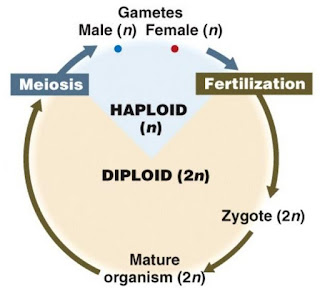
Leave a Reply
Want to join the discussion?Feel free to contribute!